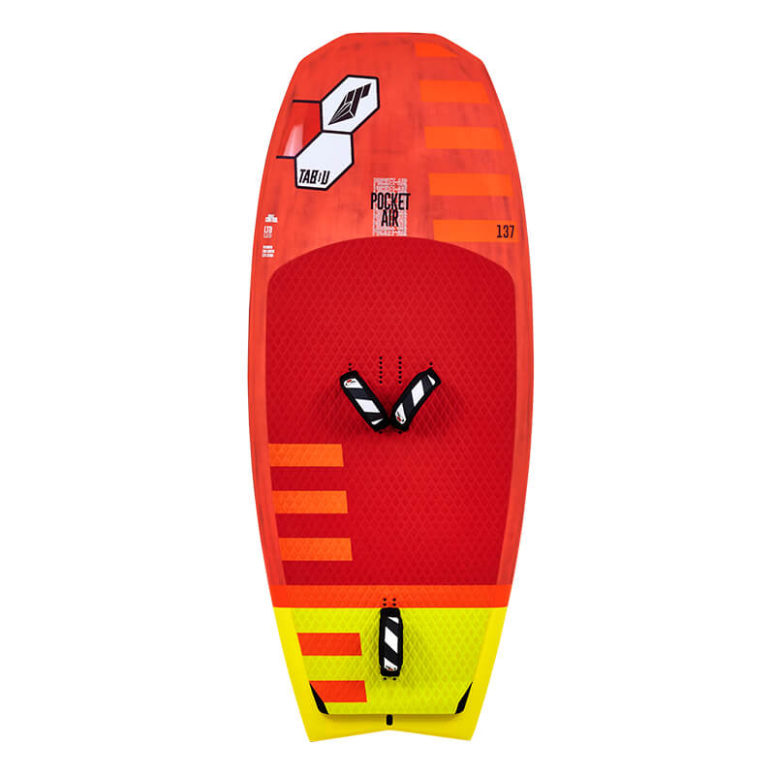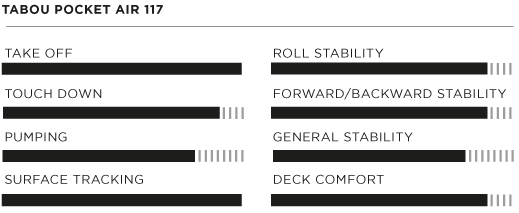

When you purchase gear through links on our site, we may earn a small commission. Here’s why you can trust our tests and our affiliate partner.

Fabien Vollenweide of Tabou has been creating windsurf boards form his French HQ for over 30 years and is well respected across all disciplines of the world of windsurfing… With the arrival of winging, and the fact that many manufacturers are employing similar constriction techniques to their wing boards, it was a natural progression for Tabou to step into the world of wing sports with the Pocket Air. We had one of the big boys in the line up on test, the 117.
First impressions are favorable, with a very striking and we thought super-stylish red and yellow colorway and a crisp and clean finish. The weight is also very impressive at a shade over 8.5kg which, for a 117, makes it a very light board… The Pocket Air is a ‘compact’ board, coming in at 178cm so squirreling away all that volume is an artform in itself (we have tested kiteboards the same length that are 19 liters!). The Pocket Air is thick throughout but the bulk of the volume is in the front third, with a wide entry point and a ‘bulbous’ nose which protrudes the deck by around an inch through the first quarter of the board. It’s an innovative approach that we have not seen elsewhere.
Underneath there is a medium double concave through the front of the board which tapers out to a flat section through the final third of the board. The tail is a striking wide ‘fish’ shape, there is then a ‘step’ down to the bottom. Again, an innovative approach to maximizing the volume without increasing the amount of board in contact with the water.
On the water and, as this is a bigger board, we tested it with a beginner / intermediate rider in mind. It would also be good to test a smaller version to see how these design features impact on a smaller board and more aggressive riding. The Pocket Air provides a stable and comfortable platform to get you on your knees and into position. The deck pad is comfortable and the concave deck keeps you feeling secure. The shorter length of the board means that it is easy to orientate yourself and that extra volume in the nose seems to add additional stability. We had some learner wingers try the board and it was as easy to teach on as a 130 or 140l board.
Once you are on your feet, the Pocket Air tracks nicely and does not feel too cumbersome. When it is time to lift up, the board easily comes off the water without any stickiness and the tail pops up super-smoothly. If you touch down, the combination of the double concave and the bulbous nose prevent you from slapping down too heavily and we found popped you up again very comfortably. For transitions off the foil, the Pocket Air turns like a much smaller board, ensuring you can snap it around without having to draw out your turns too much. Overall the Pocket Air 117 does a great job in feeling like a smaller board while still having the volume you need to build your confidence. An impressive introduction to the wingfoil board market. AH
